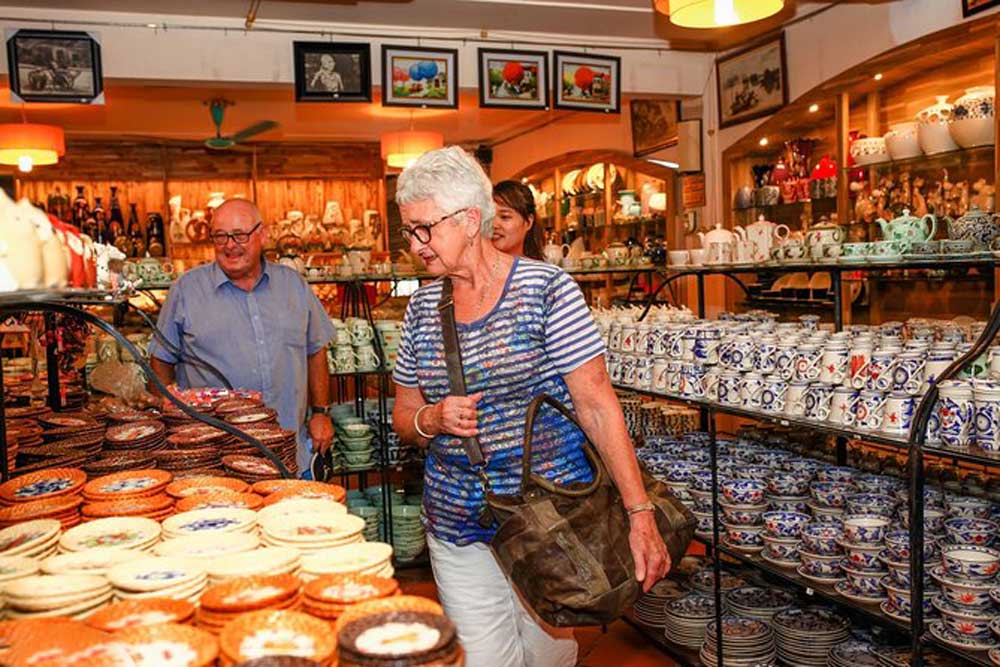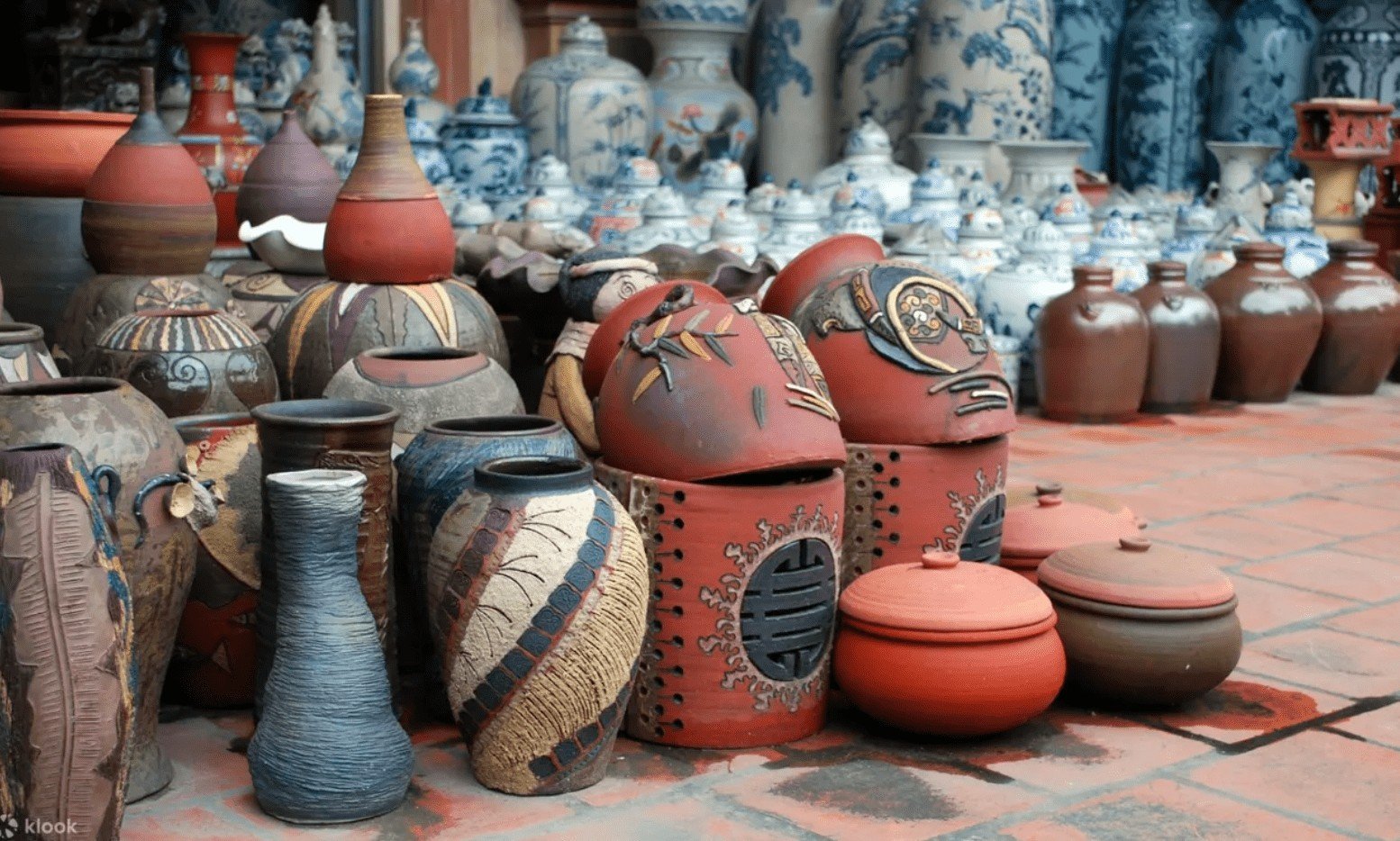News
Analyze the Local Economy Impact of Bat Trang Ceramics
Bat Trang ceramics, renowned for their exquisite craftsmanship and rich cultural heritage, have long been a significant economic driver in the Bat Trang village and surrounding areas. These ceramics not only embody centuries of traditional artistry but also represent a vibrant local industry that influences employment, tourism, trade, and cultural preservation. The impact of Bat Trang ceramics on the local economy is multifaceted and profound, reflecting the intertwining of culture, commerce, and community development.
Historical and Cultural Significance of Bat Trang Ceramics

Before delving into the economic impact, it is essential to understand the deep historical roots and cultural significance of Bat Trang ceramics. This foundation shapes much of the village’s identity and economic activity.
Origins and Evolution of Bat Trang Ceramics
Bat Trang ceramics date back over 700 years, originating during the Ly Dynasty in Vietnam. The village gained prominence as a ceramic hub due to its strategic location near the Red River, which facilitated the transport of goods. Over centuries, Bat Trang artisans perfected their craft, blending indigenous techniques with influences from Chinese and other Southeast Asian pottery traditions.
The evolution of Bat Trang ceramics has seen a transition from purely functional pottery to intricate artistic pieces. This historical depth adds immense value to each product, contributing to the ceramics’ appeal beyond mere utility.
Cultural Identity and Heritage Preservation
Bat Trang ceramics are more than commodities; they are a vital part of the local culture and identity. The designs often incorporate Vietnamese motifs and symbols, reflecting local beliefs, history, and aesthetics. Many families in Bat Trang pass down their ceramic-making skills through generations, preserving intangible cultural heritage.
This cultural preservation strengthens community bonds and provides a unique selling proposition in the global market. Tourists and collectors seeking authentic cultural experiences or pieces highly value Bat Trang ceramics.
Symbol of Vietnamese Craftsmanship
Bat Trang ceramics symbolize the resilience and creativity of Vietnamese artisans. In an era where mass-produced goods dominate, these handmade ceramics highlight the importance of craftsmanship, quality, and tradition. This symbolism enhances the brand’s prestige and helps sustain demand both domestically and internationally.
Economic Contributions Through Employment and Local Business Development

Bat Trang ceramics play a crucial role in sustaining and growing the local economy by creating jobs and fostering related business activities.
Direct Employment Opportunities
The ceramic industry in Bat Trang provides direct employment to thousands of local residents. From clay extraction and preparation to shaping, glazing, decorating, firing, and packaging, numerous hands contribute to the production process. Skilled artisans, apprentices, and laborers work together to maintain high-quality standards.
This employment is particularly important in a rural area where alternative industrial opportunities may be limited. It offers stable income sources and helps reduce urban migration by allowing locals to stay in their hometown.
Supporting Artisan Communities and Family Businesses
Many Bat Trang ceramic producers operate as small family businesses or cooperatives. These enterprises preserve tradition while adapting to market demands. Family-run workshops foster intergenerational knowledge transfer and maintain the village’s social fabric.
Additionally, ancillary businesses such as suppliers of raw materials, toolmakers, and logistics providers benefit indirectly. This ecosystem amplifies the economic impact within the community.
Skill Development and Vocational Training
The Bat Trang ceramics sector also encourages skill development and vocational training for younger generations. Workshops, training programs, and apprenticeship models enable youths to acquire specialized skills that improve employability and income potential.
This investment in human capital supports sustainable economic growth and innovation within the ceramic industry, helping local artisans compete in national and global markets.
Tourism and Its Multiplier Effects on the Local Economy

Tourism driven by Bat Trang ceramics significantly boosts local income, infrastructure, and service industries.
Attraction of Domestic and International Tourists
Bat Trang village attracts numerous tourists eager to witness traditional ceramic crafting firsthand. Visitors participate in hands-on workshops, tour kilns, and purchase authentic products. This experiential tourism creates an emotional connection between consumers and the craft.
International tourists often combine cultural exploration with shopping, making Bat Trang a must-visit destination around Hanoi. Domestic tourists, especially during holidays and festivals, also boost foot traffic and spending.
Growth of Hospitality and Retail Sectors
Tourism generates demand for accommodation, food services, transportation, and retail outlets. Local entrepreneurs have opened cafes, guesthouses, souvenir shops, and restaurants catering to visitors. This diversification of the local economy reduces dependency solely on ceramics production.
The increased footfall encourages infrastructure improvements such as better roads, signage, and public amenities, enhancing the overall living standards of residents.
Promotion of Cultural Festivals and Events
Regular cultural festivals showcasing Bat Trang ceramics and traditional arts further attract tourists and media attention. These events provide platforms for artisans to exhibit their work, network, and negotiate sales.
Festivals stimulate short-term spikes in economic activity by drawing crowds and encouraging spending, while also reinforcing Bat Trang’s reputation as a cultural hotspot.
Trade Dynamics and Market Expansion of Bat Trang Ceramics

The commercial success of Bat Trang ceramics depends heavily on trade channels and market reach. Understanding these dynamics reveals their broader economic influence.
Domestic Distribution Networks
Within Vietnam, Bat Trang ceramics are distributed through various channels including retail stores, craft markets, department stores, and online platforms. Urban centers like Hanoi and Ho Chi Minh City serve as major consumer markets.
Strategic collaborations with retailers and interior designers have expanded usage of Bat Trang ceramics in homes, hotels, and offices. Domestic demand remains strong due to increasing middle-class incomes and rising appreciation for cultural products.
Export Markets and Global Reach
Bat Trang ceramics have found markets in North America, Europe, Asia, and Australia. Exporters leverage trade fairs, cultural exchanges, and e-commerce to access international buyers. High-quality craftsmanship and unique designs differentiate Bat Trang products in competitive global markets.
Increasing globalization and interest in sustainable handmade goods present both opportunities and challenges. Artisans must balance maintaining authenticity with meeting foreign regulatory and aesthetic expectations.
Challenges and Opportunities in Market Expansion
Bat Trang producers face challenges such as pricing pressures, competition from industrial ceramics, and fluctuations in international demand. However, embracing innovations like modern designs, branding, and digital marketing can open new avenues.
Developing certification systems for authenticity and quality assurance would strengthen consumer trust. Partnerships with international designers and brands could also enhance visibility and sales.
Environmental and Social Sustainability in the Bat Trang Ceramic Industry
Sustainability is becoming increasingly important in assessing the true economic impact of any industry, including Bat Trang ceramics.
Environmental Impacts and Resource Management
Ceramic production requires natural resources such as clay, water, and energy for kiln firing. Improper management can lead to resource depletion, pollution, and waste issues. Bat Trang faces pressure to adopt eco-friendly practices to safeguard its environment.
Efforts include recycling clay scraps, using cleaner kiln technologies, and minimizing chemical glazes. Sustainable sourcing of raw materials is essential to preserve the village’s natural surroundings for future generations.
Social Responsibility and Community Well-being
The well-being of Bat Trang’s artisanal community is vital for long-term industry sustainability. Fair wages, safe working conditions, and health care provisions improve quality of life and productivity.
Community initiatives supporting education, healthcare, and cultural activities reinforce social cohesion. Encouraging women’s participation in ceramics production promotes gender equality and empowerment.
Balancing Tradition with Modern Sustainability Standards
Maintaining the delicate balance between preserving traditional ceramic methods and adhering to modern sustainability requirements is challenging yet necessary. Innovations should complement rather than replace cultural heritage.
Collaborations with environmental experts and NGOs can provide guidance and funding for sustainable practices. Transparent communication about efforts enhances consumer confidence and market competitiveness.
Conclusion
The local economy of Bat Trang revolves intricately around its centuries-old ceramic craft, intertwining cultural heritage with economic vitality. Bat Trang ceramics act as a catalyst for employment, community entrepreneurship, tourism, and trade, enriching the lives of local residents. While the industry faces challenges from globalization, environmental concerns, and market competition, its adaptability and commitment to tradition offer promising prospects. Sustainable development strategies that honor cultural integrity while embracing innovation will ensure that Bat Trang ceramics continue to fuel the local economy and preserve their unique legacy for generations to come.
